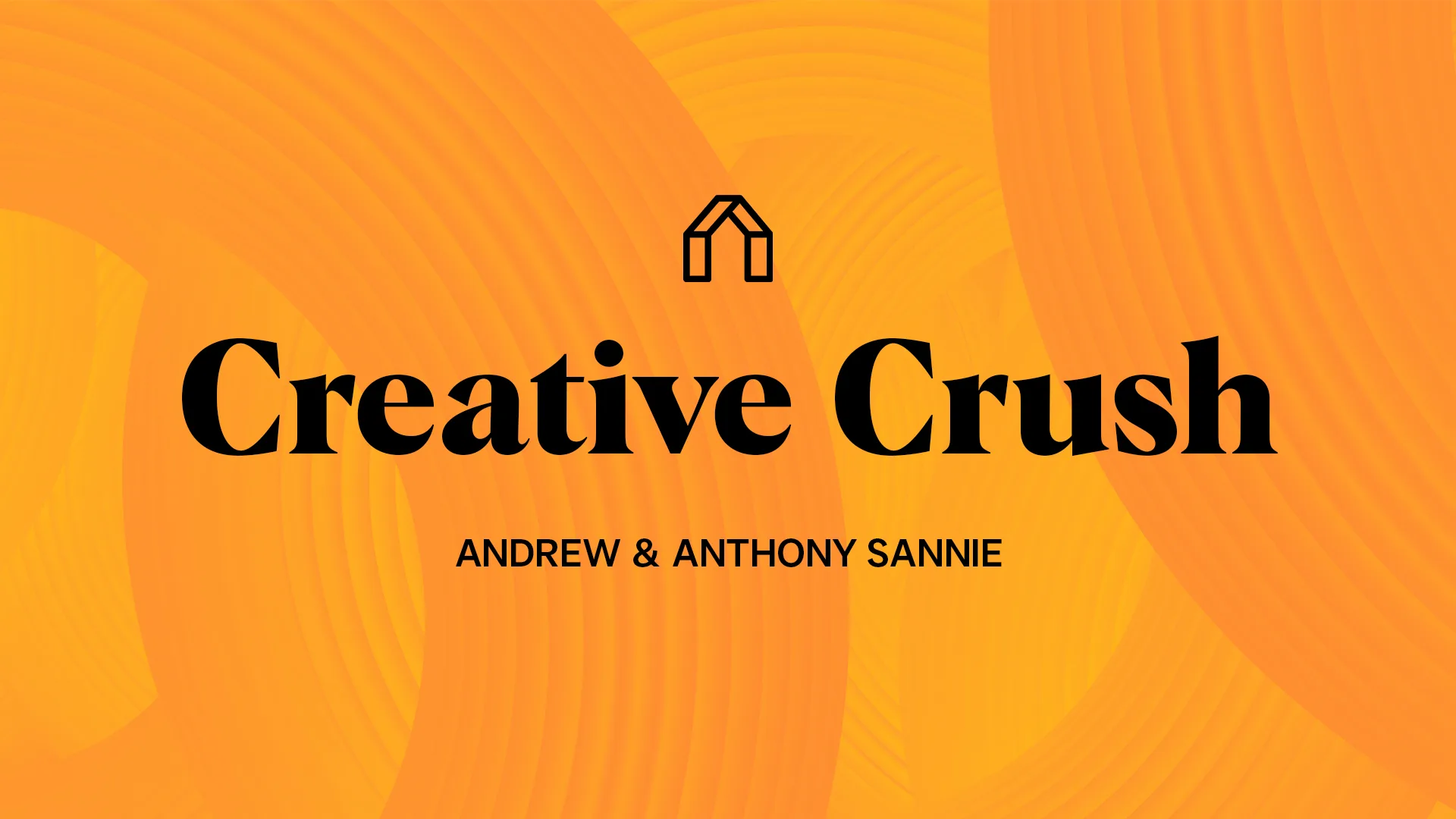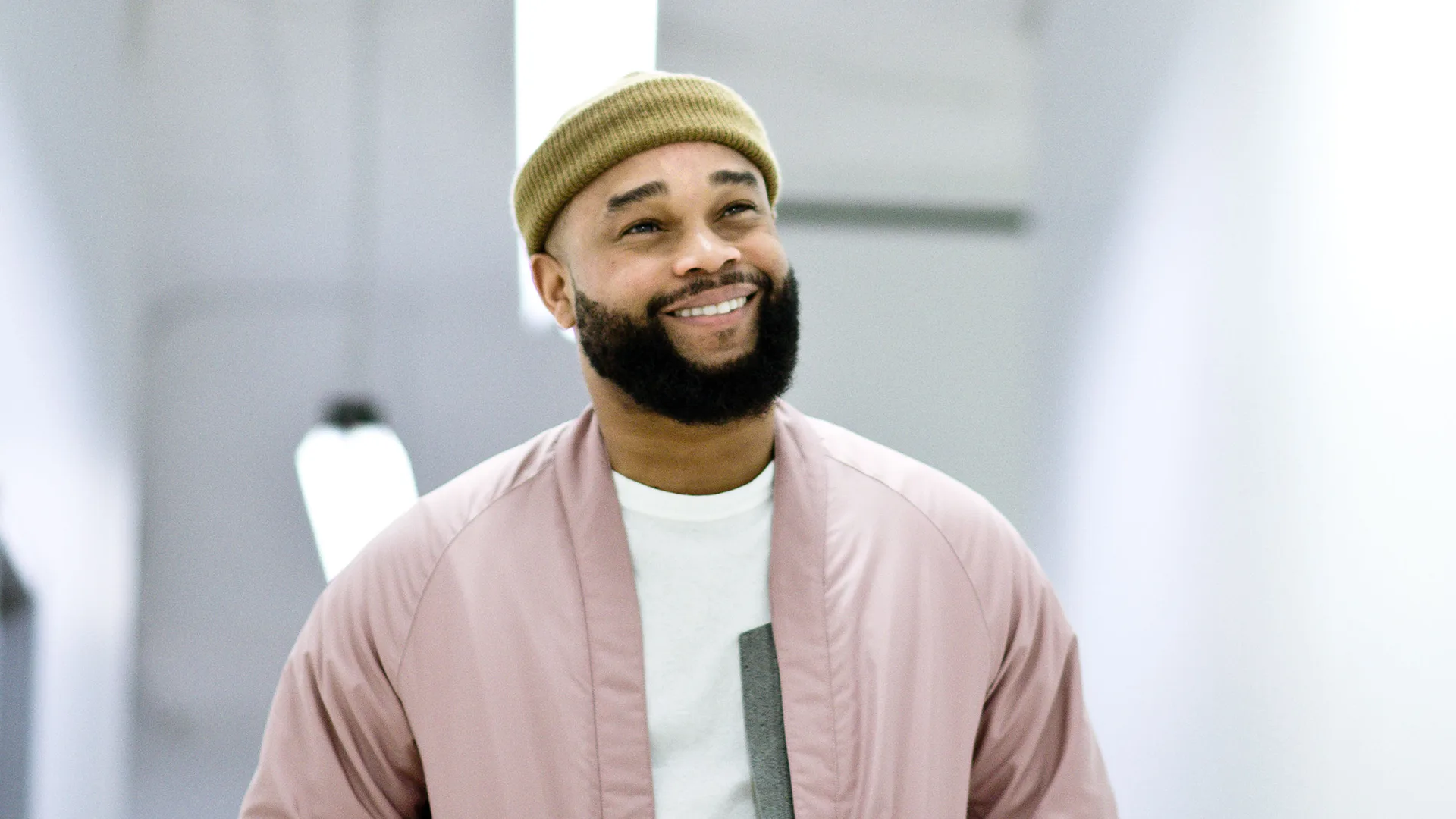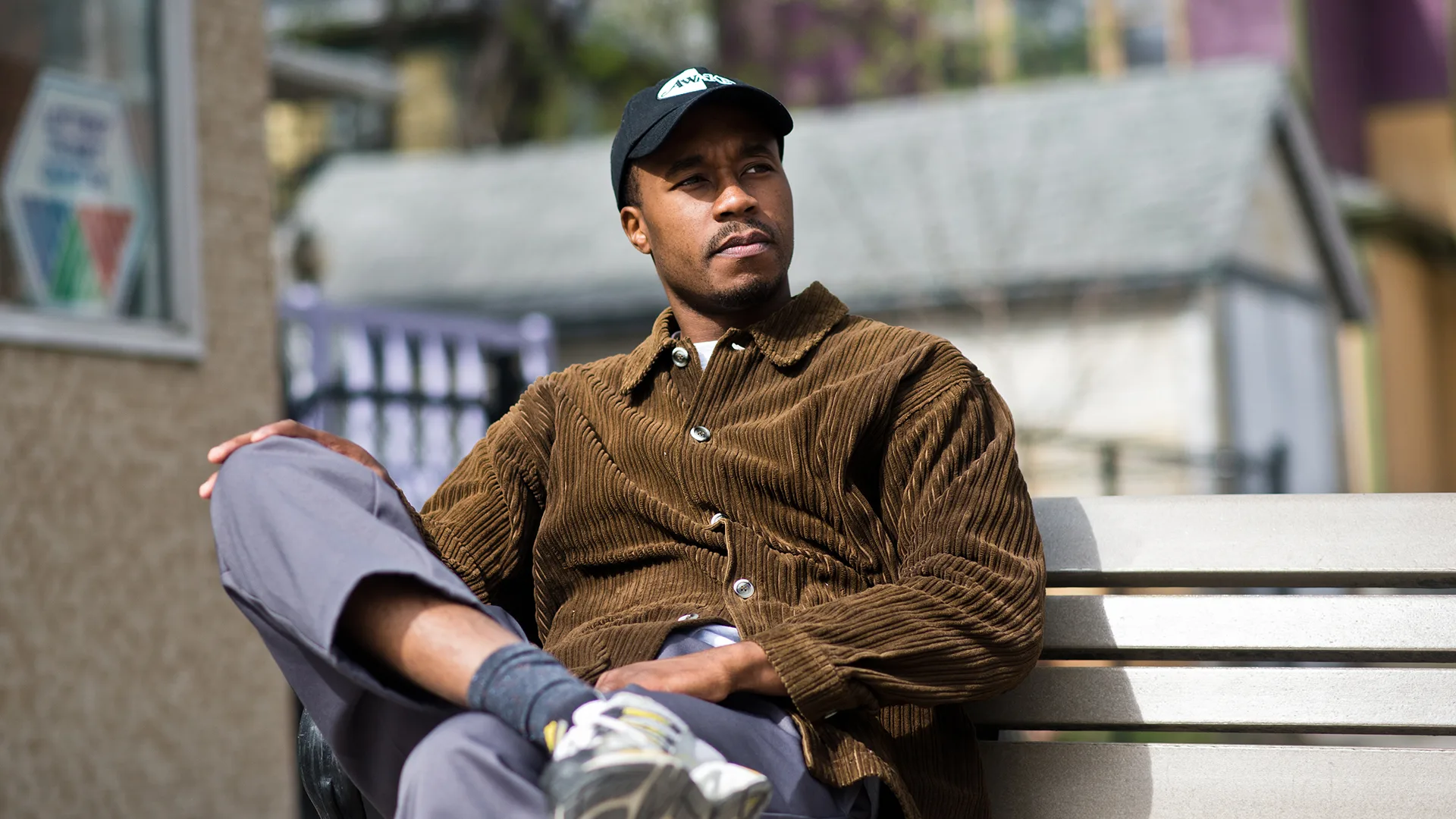
While many creatives might specialize in one or two art forms, Anthony and Andrew Sannie are a pair of bona fide Renaissance Brothers, boasting an impressive list of artistic disciplines and projects. You may recognize them from The Lytics, a Winnipeg-based hip-hop group that’s been performing for 15 years. But they’re also two of the three masterminds behind Grape Labs, an experiential marketing agency, and Surplus Market, a vintage shop located in Hudson’s Bay CF Polo Park, which they co-own with their business partner, Kyle Goldstine.
UpHouse is hot off the heels of one of our biggest campaigns yet (which featured some gorgeous merch designed by the Sannies themselves), so now seemed like an opportune time to shine a light on these creatively inclined brothers.
You specialize in experiential marketing. What inspired you to pursue that niche area of marketing?
Anthony: It stemmed from being an artist and travelling around the world, visiting a lot of different festivals and seeing how all these different activations came to life in different markets. At first, I didn’t connect the dots and put the two and two together. ‘Why is there this cool German beer company at this festival? Why is this engagement happening?’ But after some years, I realized this is a form of experiential marketing. It’s pretty interesting. I’m a big fan of how brands engage with target audiences, so for me, it’s an artistic practice.
Andrew: We both got our Communications and Rhetoric degrees with an English major from the University of Winnipeg. Then, I was doing PR for non-profits. From there, it’s just grown as we’ve made music and whatnot. This is, in many ways, a combination of all the different things we’ve been doing over the past 10 years.
For the readers at home, can you describe your work for our recent campaign collaboration for Travel Manitoba?
Anthony: We all touched on different things, but one piece we all worked on was the merch design. But not just a standard clothing line that you’d see at the airport—we wanted these pieces to actually feel like something someone would wear, while representing the province in a unique way.
Andrew: We’re culture marketers. The most all-encompassing way of describing how we operate, is just looking at different elements of culture, pulling out all the most interesting aspects and ensuring that it resonates with our culture at large. How do we bring the X Factor and distill it down, so it resonates with culture?
Can you describe your creative process? Where do you start?
Andrew: When a brief comes in, it’s the three of us sitting down and just throwing ideas around. Often, we’re not even taking notes—we just start talking. I find it really similar to music, where you start with a lot of big ideas. Some of them are kind of dumb and funky, and then they get refined a little bit, then a little bit more, and then one day you come back, and it’s like, ‘Oh! This is a finished song.’
What do you do to get out of a creative slump?
Anthony: It’s pretty simple. I walk away from it and focus on something new or different. The creative spark will usually come back in a few days if you breathe and step away.
Andrew: Creativity doesn’t leave; you know what I mean? Sometimes you just need to be inspired by other things. If it’s not coming right away, move on to different work or do something else entirely. Put it away for a week. For me, the idea shows up when I’m in the shower, working out or cooking. And then something clicks, like, ‘Oh, shoot, that’s a cool idea,’ and I write it down in the notes app on my phone. Any good idea that I’ve ever had, I have to write it down. Sometimes, I’ll have trouble getting inspired, and I’ll look back at the notes. Sometimes I find the answer to what I’m looking for, hidden within the thousands of other ideas I put to the side.
Where do you find inspiration for your creativity?
Anthony: I’m a fan of people. I love people and how we’re all so unique and different. I find inspiration through conversations and people that don’t necessarily live the same kind of life that I do. Travelling is always good for that, too. And allowing yourself to be vulnerable, pushing yourself to be in situations you’re unsure about. Because usually, you end up doing it, and then you take something away from the experience.
Andrew: I take a lot of inspiration from culture, music, architects—anything I see that’s interesting, I’ll take note. Sometimes it will inspire our work—a piece of architecture could inspire a song or a campaign. I try to take as much from anything I can, because who knows what it’s gonna lead to?
Are there any artists or creators that you’re loving right now?
Anthony: I’m really big into South African house music, and ampiano. Kwaito is an older South African house that was popular during the apartheid. I love that there’s so much energy in the music. It’s very rhythmic and intense, soulful, and angry. I love DJ Maphorisa and the producer Kelvin Momo.
Andrew: For visual artists, I’ve been a huge fan of Namsa Leuba for a long time. I’m working on a solo music project right now, and I’m starting to think about my visual identity. So, I’ve been exploring a lot of her stuff and digging back in.
What advice would you give to other Black creatives following in your footsteps?
Anthony: Well, this goes for any young creative—I would say, try to find inspiration in what other people are doing, and don’t follow in someone else’s footsteps. Create your own pathway. Strive for your own unique accomplishments. Whatever industry you choose, do things your way. No way is the way—there’s no standardized way. You’re going to make mistakes, and that’s okay.
Andrew: I would say, whatever you want to do, just start. Often, people are waiting for someone to give them an opportunity or show them how to do it. If you want to make music or be an artist, just start anything. Do some research and see how you can start on your own. Some of the greatest pieces of art start with people in their bedroom or their parents’ basement, just making it happen at whatever level they’re at. It’ll develop and will all make sense eventually.
What does the future of experiential marketing look like to you? What changes do you foresee in the near future that will affect your work?
Anthony: Tech is a massive part of it now. AI, VR—we’re seeing some really cool things happening in experiential and culture marketing.
Andrew: I’ve been kind of unsure about a lot of that stuff. There’s something special about real-life experience that you can’t really get from anything else. People trying to experience these other virtual experiences just seems weird. I’ve tried a little with the VR and it’s kind of clunky, so I don’t know—maybe one day it’ll all make sense. I don’t see how anything could ever replace what you go through and experience and touch in real life. But I am very curious to see how that changes!
What are your future goals, personally and professionally?
Andrew: I want to continue growing, which is maybe a cop-out answer. I would hate to look back at the end of the year and be like—did I not grow or learn any new things? Am I better at XYZ, or worse?
Anthony: For me, just finding more stability between doing so many different things simultaneously. Once I find that, I think it’ll make me a lot happier and at peace. And it’ll open up more room to enjoy different things that I’m currently doing. At the same time, I do like being busy—it brings me a lot of joy.
Check out Grape Lab’s website and give them a follow on Instagram to keep up with their latest artistic endeavours!





